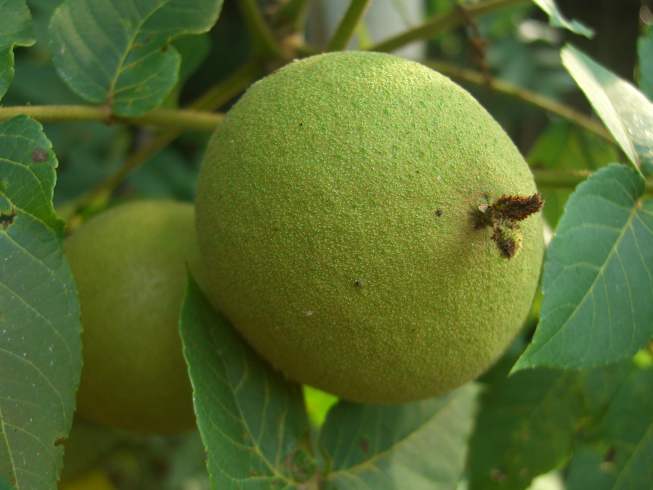A walk through the woods can be one of the most peaceful and calming experiences — a place where you can find quiet for reflection and marvel at the beauty of nature. Little do most people know that some plants, especially one specific tree, wage chemical warfare against other plants to keep away potential neighbors that would compete for nutrients and sunlight. In the Appalachian Mountains, the tree most skilled at chemical warfare is the black walnut.
The black walnut tree (Juglans nigra) is a useful, yet often misunderstood tree. Prized for its excellent wood qualities for lumber and furniture, the nuts it produces are either loved or reviled by those who try them.
The flavor of black walnuts is hard to describe. I would say that they have an almost astringent flavor, mainly due to the high level of tannins in them. They aren’t my favorite, but I don’t mind them either. I’ve learned to accept them, unlike during my childhood when you knew which church lady’s cake to avoid at the potluck because you knew that she put black walnuts in everything she baked.
My appreciation for black walnuts grew the year that I was the official nut judge (no joke) for the Black Walnut Festival in Spencer, WV. It was quite an experience — examining and weighing all the entries with a team of high school FFA students who cracked more than a few inappropriate jokes about the situation.
You could tell when someone was picking or cracking black walnuts, thanks to the tannin stains on their hands that just wouldn’t wash off. Black walnuts are a tough nut to crack (literally), so I also remember my grandmother cracking them “the easy way.” She would just pile them up in the driveway and run over them a time or two with her behemoth of an Oldsmobile (you know, the one that had full seats front and back and could hold half the neighborhood).
Black walnut trees have the interesting ability to excrete a chemical called juglone, which makes it nearly impossible for a number of plants to grow anywhere in its root zone. Juglone works by damaging the tiny root hairs on roots that are responsible for taking up a great majority of the water and nutrients the plants use. Research shows that it also interferes with the interaction of the roots with mycorrhizal fungi that aid the plant in taking up nutrients.
This process is not just specific to black walnuts. There are several other plants that do this. The phenomenon, called allelopathy, occurs when an organism excretes something that inhibits the growth of other things around it. You could equate it to the Penicillium fungus excreting a chemical that kills bacteria around it. We harness that chemical to use as penicillin.
Some plants are especially sensitive to the chemical. Many vegetable plants, especially tomatoes, are sensitive. Some plants, mainly those that would grow wild in the woods, are not susceptible. Many grasses also have a hard time growing beneath black walnut trees (tall fescue and Kentucky bluegrass being the exception, except during periods of drought).
Publication with lists of plants tolerant and damaged by juglone
All parts of the tree produce the juglone chemical, so the effects could spread beyond the perimeter of the tree from fallen leaves and branches. I would also suggest that you make sure any fresh woodchip mulch that you use (specifically that from local tree cutters) is free of black walnut. The juglone may break down after composting the wood chips for six months to a year, but I would still be cautious about its use. The wood will release the chemical, killing susceptible plants for a few years in the area where it is applied. Studies suggest that juglone will break down during the composting process, but I would check to make sure by starting a few tomato seeds on the batch of compost to see what happens.
—Garden Professor John Porter is a county extension agent for West Virginia University and writes the weekly Sunday garden column for the Charleston Gazette-Mail Newspaper. This article was originally published October 2, 2015.
You can find John’s writing at wvgardenguru.com and on Facebook and Twitter.
